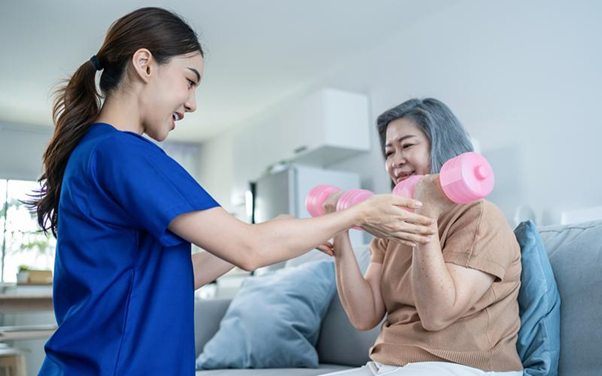
How Stroke Rehabilitation at Home Promotes Faster Recovery
Recovering from a stroke can be a challenging journey, both physically and emotionally, and rehabilitation is crucial in helping patients regain independence and rebuild their daily routines. While hospitals and clinics offer essential therapy, more patients are choosing stroke rehabilitation at home as part of their recovery plan, as a familiar and comfortable environment can support consistency in therapy. For families seeking reliable elderly home care services in Singapore, at-home rehabilitation provides a structured method to aid recovery while ensuring patients receive the proper level of support.
A Comfortable and Familiar Environment Supports Progress
One of the most significant advantages of stroke rehabilitation at home is the comfort it brings. Patients who feel safe and supported in their own homes are more likely to stay motivated to complete their exercises and therapy routines. This familiarity also encourages independence, as they can practise daily activities like dressing, walking, or cooking in the spaces where they normally live.
In contrast to clinical settings, home-based therapy allows for more flexibility in routines. Sessions can be scheduled at suitable times without the added stress of transportation. This convenience can help reduce missed appointments, leading to more consistent rehabilitation efforts. Consistency is critical after a stroke, which often makes a tangible difference in recovery outcomes.
Personalised Therapy Tailored to Individual Needs
Every stroke patient has different needs, depending on their symptoms, severity, and personal goals. Home-based rehabilitation provides the opportunity for a more tailored approach. Therapists can assess the patient’s living environment and recommend exercises that directly address their daily challenges. This personalisation ensures that therapy is practical and immediately applicable to their everyday life.
Through elderly home care services in Singapore, patients can also receive additional support from trained caregivers alongside physiotherapists. This holistic support allows patients to focus on regaining strength and mobility while caregivers assist with tasks such as transfers, hygiene, and medication reminders. By working closely with both the patient and their family, the rehabilitation plan becomes more targeted and realistic..
Reducing the Risks Associated with Institutional Care
Hospitals and rehabilitation centres are valuable for acute recovery, but prolonged stays can sometimes expose patients to risks such as infections or unnecessary stress from unfamiliar environments. Opting for stroke rehabilitation at home allows patients to recover in a controlled and familiar space. This can help minimise exposure to potential complications and provide a sense of security that supports emotional well-being.
Additionally, home-based care often complements other elderly home care services in Singapore, such as nursing assistance, personal care, and mobility support. This integrated care model allows patients to receive comprehensive support without the need for extended hospital stays, making recovery more sustainable and manageable for both patients and their families.
Encouraging Family Involvement in Recovery
Family support plays a crucial role in stroke recovery, and when rehabilitation happens at home, loved ones are more involved in the process. They can observe therapy sessions, learn how to assist with exercises, and provide emotional encouragement. This involvement not only boosts the patient’s morale but also ensures the family understands how to create a supportive environment.
Therapists can also teach caregivers and family members how to help with movement and daily routines safely. This empowers the household to take an active role in recovery while maintaining a balance between support and independence. When patients see that their family is invested in their progress, they are often more motivated to continue their rehabilitation
Supporting Long-Term Independence
Stroke rehabilitation is about building long-term independence, and at-home therapy focuses on practical exercises that strengthen mobility, balance, and cognitive function. By practising in their own living spaces, patients can gradually regain the skills they need to manage daily activities.
This long-term approach often leads to better retention of skills and routines compared to short-term hospital stays. It also gives patients the confidence to take small but meaningful steps towards independence. Paired with elderly home care services in Singapore, home-based rehabilitation helps with sustainable recovery.
Conclusion
Choosing stroke rehabilitation at home can be an effective way to support faster and more consistent recovery. By offering a familiar environment, personalised care, and strong family involvement, it empowers patients to regain their independence at a steady pace. Combined with elderly home care services in Singapore, this approach addresses both physical and emotional needs, making rehabilitation a collaborative process between professionals, patients, and families.
Support your loved one’s recovery with personalised home therapy. Contact The Home Physio today to learn more about their stroke rehabilitation at home services.
- Why a Massage Spa in Singapore Is More Than Just a Luxury Experience - November 4, 2025
- Why Dental Pain Happens and How a Family Dentist Can Help - November 4, 2025
- The Beginner’s Guide to Physiotherapy in Singapore - November 4, 2025
